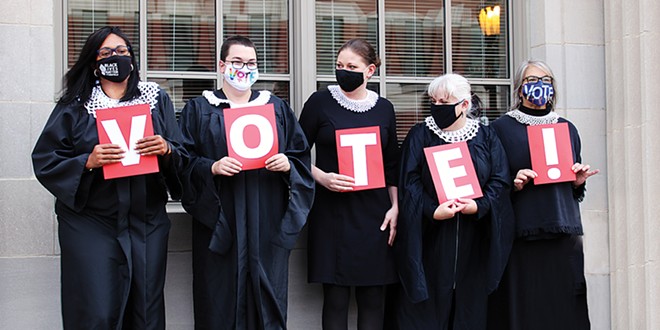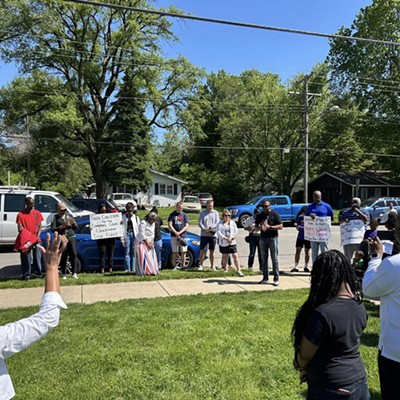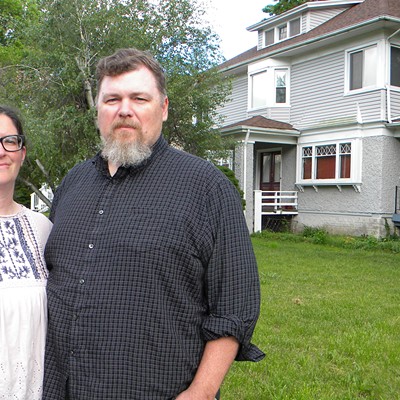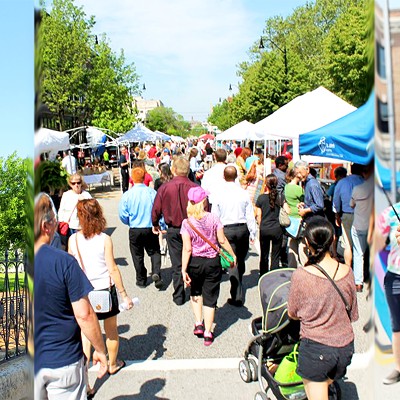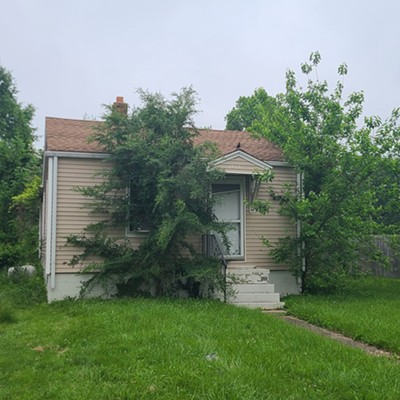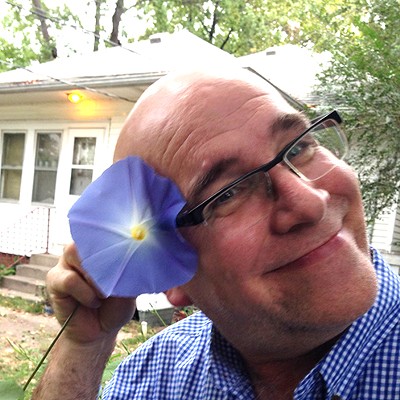Suffragists in Illinois were ahead of their time, earning the right for women to vote in presidential elections in 1913, before many other states. State suffragists utilized a variety of methods.
In 1891, Ellen Martin, a Chicago lawyer who lived in Lombard, was reportedly the first woman in the state to vote. Since the town's statute stated "all citizens" above the age of 21 could vote, she insisted that included her. "Martin went to the polling place, and the election judges were so flabbergasted that one fell backwards into a flour barrel," wrote John Lupton of the Supreme Court Historic Preservation Commission. "The judges eventually allowed Martin to vote, and Martin gathered up 14 additional women to vote also."
Later that same year, Illinois women won the right to vote in school board elections. Across-the-board voting rights were piecemeal and hard-fought. Members of tthe Illinois Equal Suffrage Association argued their right to vote should be included in the 1870 Illinois Constitution, to no avail. As the nation celebrates the centennial of the 19th Amendment, many women say stakes for their rights are still high, and better inclusion is still necessary.
Grace Wilbur Trout of Chicago helped successfully lobby the state legislature to pass a bill allowing women to vote in presidential and municipal elections. Trout had employed a variety of efforts to campaign for the Illinois Suffrage Act, including an automobile tour. Trout joined Gov. Edward F. Dunne for a ceremonial bill signing in 1913.
One of Springfield's most famous socialites and philanthropists, Susan Lawrence Dana, was an active proponent of suffrage. According to an article in the Illinois State Journal, she hosted Jane Addams and more than 100 other suffragists at her home, designed by Frank Lloyd Wright, while they were in the city in 1910 lobbying.
Holly Kent teaches history at University of Illinois Springfield, where she's a go-to source of information on suffrage and women's rights. In a virtual presentation, recorded earlier this year, she outlined the complicated history of the movement for equality. Dominant suffrage organizations in the late 19th and early 20th centuries were led "by white women" who had "a range of different attitudes towards women of color and a wide range of attitudes in terms of their awareness of and their investment in any kind of racial equality," Kent told Illinois Times.
Alice Paul – a leader of the U.S. suffrage movement who learned radical tactics from suffragettes in Great Britain before later using similar methods in the states – is heralded as a leader of the movement. She co-authored the Equal Rights Amendment (ERA) in 1923, a proposal that proponents say would enshrine women's rights more broadly into the U.S. Constitution. And she positioned herself as an ally of civil rights causes. However "some of her actions don't align with that," said Kent. Paul claimed she was being strategic by framing racial equality as a separate issue. "The struggle, particularly for African American women, for Native American women, continues beyond that (the 19th Amendment), certainly up to the Voting Rights Act of 1965."
Ida B. Wells, who spent much of her life in Chicago, refused to take a back seat to the movement. When white women instructed her and other Black women to walk in the rear of a 1913 suffrage procession in Washington, D.C., Wells refused. She joined white women from the Illinois delegation as they marched with thousands of others. "I am not taking this stand because I personally wish for recognition. I am doing it for the future benefit of my whole race," Wells reportedly said of her decision to defy orders.
Earlier this year, artist Helen Marshall created a mosaic using the photos of thousands of women who fought for the right to vote to make a mosaic in Wells' likeness. It was projected in Washington's Union Station to celebrate the 19th Amendment's centennial.
Wells established the Alpha Suffrage Club in Chicago in 1913, which carved out a space for Black women where the mainstream suffrage movement had failed to do so. Wells had been born into slavery in Mississippi. She reported on lynchings as an investigative journalist and was a staunch activist for civil rights, famously having said, "One had better die fighting against injustice than to die like a dog or a rat in a trap."
Wells was a co-founder of the NAACP, which was inspired by a racist massacre in Abraham Lincoln's hometown. The so-called 1908 Race Riot in Springfield illustrated lynchings and brutality against Black people were not confined to the South.
Tiffani Saunders teaches about Wells at UIS where she is a professor of sociology, anthropology and African American studies. Wells sued a railroad company in 1884 after being told she had to sit in the segregated area of a train, decades before Rosa Parks would refuse to move from her seat on a bus. It's a link in civil rights history Saunders makes a point of including in her lessons. Saunders said the work Wells did to report on lynchings and the true motives behind them meant white people "could no longer ignore what was happening."
There was a prevailing "idea that the white woman was pure and needed to be protected from the Black aggressive man who would steal away her purity," said Saunders. By investigating the claims meant to justify lynchings and collecting data, Wells was able to prove the falsehoods surrounding this form of violent oppression, which in reality was often related to white people feeling economically threatened by the success of Black businesses.
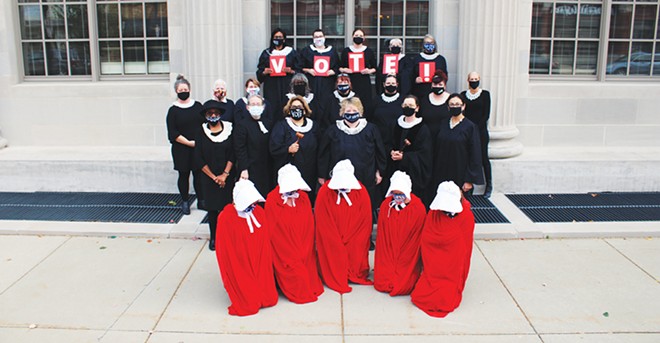
It was in Chicago that Wells met her husband, Ferdinand Barnett. Upon their marriage in 1895, she took the hyphenated last name of "Wells-Barnett," a rare concept at the time. In Chicago, Wells-Barnett's suffrage organization helped elect the first Black alderman to the Chicago City Council in 1915.
The League
Theresa Faith Cummings grew up on the west side of Springfield. She didn't see many other Black kids at the public schools she attended. Later, she'd help advocate for civil rights, including the desegregation of Springfield Public Schools in the 1970s. Of the many awards and affiliations she's had over the years, the Springfield chapter of the League of Women Voters is one.
Nationally, the league was founded in 1920 after suffrage groups merged, with a goal to promote civic engagement upon achieving the success of the 19th Amendment. With chapters in states and cities across the country, the league advocates for issues, but not candidates.
Cummings remembers league members as eager to volunteer to help her in her role with a multicounty Community Action Agency, where she oversaw government assistance for necessities such as rent and utility payments.
Cummings would make regular trips to Washington, D.C. "I would fly out in the morning and come back on the plane in the evening." On the weekends she would meet in various cities for her role with the National Women's Political Caucus. Cummings said there was unity between various efforts. "Women's organizations are family, you have to work together for your whole family," she said. Issues such as health, education and employment were common ground. And there was civility among those who disagreed. She and others had close relationships with legislators and members of Congress. "The staff knew who we were, we didn't have to introduce ourselves."
Charlie Wheeler was a Chicago Sun-Times Statehouse reporter from 1963-1993 before going on to lead the Public Affairs Reporting program at UIS, from which he retired last year. He said the women in the league were seen as "goo-goos" – good government proponents. They were "dedicated to noble causes and to wanting to do things the right way. And it wasn't about personal advantage, or political gains or financial rewards, as it was for so many other people who lobby the legislature."
Wheeler witnessed the battle in Illinois over the ERA, that proposed piece of legislation Alice Paul and other suffragists had fought for that would add language to the Constitution stating rights could not be denied on account of sex. It went to the states for ratification in 1972 and had bipartisan sponsorship in Illinois.
But Phyllis Schlafly – an attorney, author, political candidate and activist from Alton – and her army of housewives, successfully lobbied against it, arguing it would make women eligible for the draft and make abortion access the law of the land. It wasn't until 2018 that the amendment was narrowly ratified by the state legislature, with anti-abortion lobbyists, including Schlafly's daughter, arguing against it until the final vote. Lobbying for the ERA was one of the league's greatest battles in Illinois.
But there were local issues in Springfield the league addressed as well, as an Illinois Times article from 1977 highlights. The Springfield chapter formed in 1939. It began as a study group that later moved toward more significant action. Along with the organization as a whole, league members were loved and hated, called the "plague of women voters" and "civic watchdogs in high heels." Some simply saw them as "nice white ladies," as the league mostly consisted of middle-aged white women.
Members did, however, combat racism. In Springfield, they assumed the role of investigative reporters. They sent Black and white couples to inquire about rental properties. The couples reported back their findings of discriminatory practices, such as price fluctuation based on race. The subsequent report ultimately led to the city council passing a 1968 fair housing ordinance.
Later, league members helped lobby to change the form of city representation to an aldermanic one that would better represent Black residents, a change that took effect in 1987. All the while they worked to register voters, hold candidate forums and watch the courts.
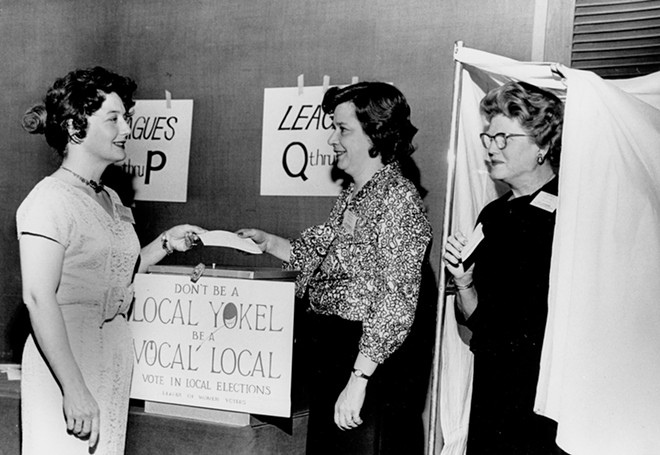
Rianne Hawkins was part of the recent effort to reinstate the Springfield chapter after a lapse in activity. "I think after the 2016 (presidential) election, there was a real appetite to do something here locally." Hawkins served as the first president of the reinstated chapter and prioritized getting the message out that the league was back, as well as forming connections with others, such as Action Illinois, an umbrella group of activists also formed after the 2016 election.
Certain aspects have largely stayed the same. "A lot of the league members are active in being election judges on Election Day and being registrars. There's a strong group of volunteers that is interested in voter registration, they show up at a lot of events to register voters," said Hawkins, who is still a member.
Wheeler said after all these years since he first witnessed the league in action, there is still very much a place for the mission. "In the current corrosive atmosphere where people seem more invested in disliking other people and hating other people ... I think to have a group that's above that, and that appeals to people's better natures and appeals to the ideals of what a democracy should be, I think that's very important."
The stakes
Keri Tate stood before more than 100 people on Sept. 19, the day after Supreme Court justice Ruth Bader Ginsburg died. Springfield residents joined her to collectively mourn the loss of Ginsburg and honor her legacy. Tate, current president of the league's Springfield chapter, gave closing remarks. She began with a quote from Ginsburg: "I wish there were a way I could wave a magic wand and put it back when people were respectful of each other, and the Congress was working for the good of the country and not just along party lines."
From the federal courthouse steps, down the street from city hall, Tate told the crowd, who donned masks and held candles, "Our vote is important." She went on, "The LGBT community needs to be loved and supported. Black lives really matter. Our disabled population, they're integral members of our community. Women and their choices, all of their choices, count and need to be honored. Immigrants deserve fair, humane services and advocacy. Our environment is critical. Health care is desperately needed and not a luxury for anyone. The poor, they are part of our national treasure. Our vote is our right, it is our voice, it is our magic wand."
This year, many of the league's efforts were thwarted by the pandemic. In August, members held a voter registration event in conjunction with the Springfield and Central Illinois African American History Museum. On Oct. 23, the league will cosponsor a third debate between congressional candidates for the 13th district. And the league continues to register and inform voters.
Tate said she wants to focus on bringing more people from a variety of backgrounds into the league's fold. She has been active in events such as women's marches, ERA rallies and other similar efforts over the past four years in Springfield. "My call to action happened when Trump was elected. It's different for lots of people. But the point is, regardless of what happens Nov. 3, the work goes on."
Emma Shafer agrees on that point, that the work is needed in perpetuity. At 21 years old, her own call to action was mass shootings. As a Springfield High School graduate, she started the Springfield chapter of Students Demand Action for Gun Sense in America. She was a Lincoln Land Community College student in 2018 when she helped organize the local March for Our Lives in the wake of the shooting at a high school in Parkland, Florida.
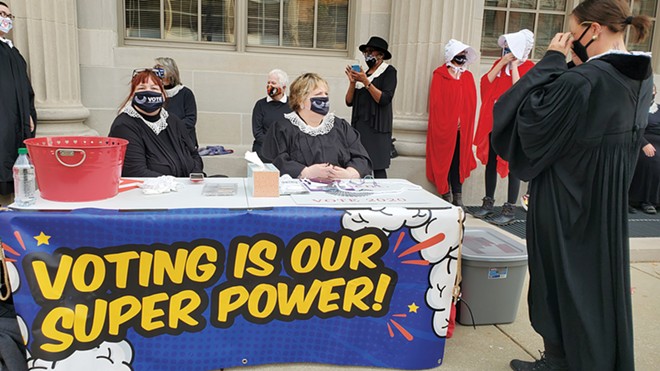
"My voice wasn't being heard," and organizing was "a good way to meet other people who are like-minded and get other people involved," she said. Shafer was too young to vote in the 2016 election, and said she was "heartbroken" at the time not to vote for whom she assumed would be the first female president.
She's now a student at The New School in New York City, though she's taking a break this semester due to the pandemic. She said she'll cast her first vote for president back home in Springfield, when she comes for a visit at the end of the month. It's the "first thing that I'm going to do," she said.
Shafer said she's thought a lot about the fact her first ballot will be cast the same year as the suffrage centennial. "They just unveiled the new (suffrage) statue in New York City, which is really incredible," said Shafer. "But it's important to note that not all women were able to vote at that time," she said. "We need to keep on working, keep on organizing."
Rachel Otwell is a staff writer for Illinois Times. Her late grandmother is former president of the League of Women Voters of Illinois, Janet Otwell, who fought for ERA ratification and directed the Illinois Juvenile Court Watching Project. Her example inspired many, including, of course, her granddaughter. Contact Rachel at [email protected].

